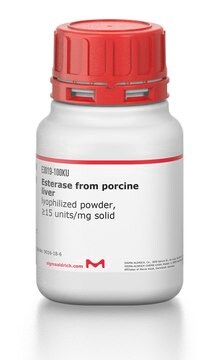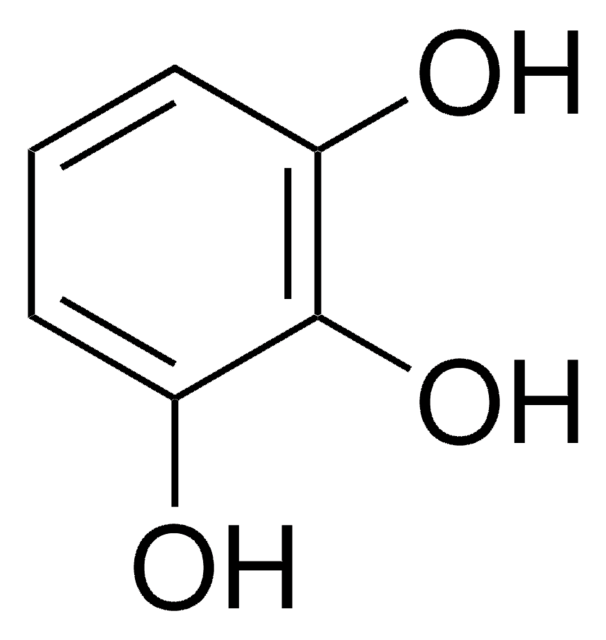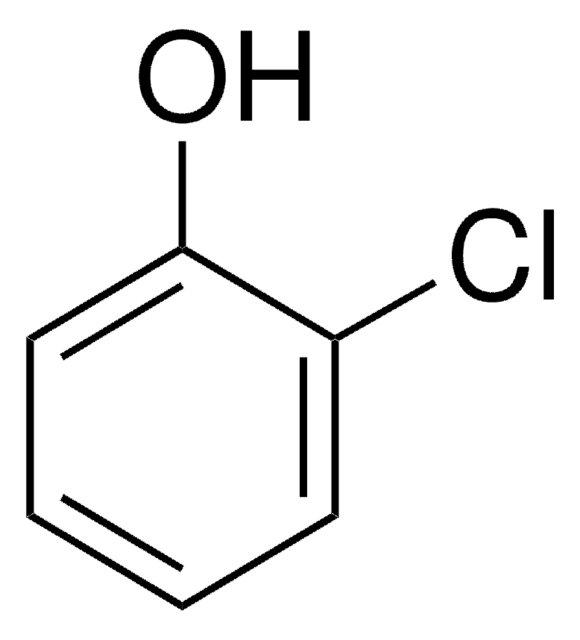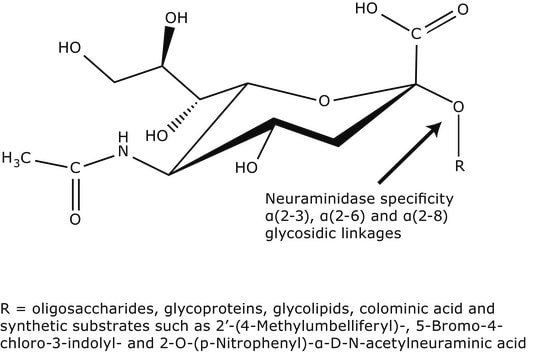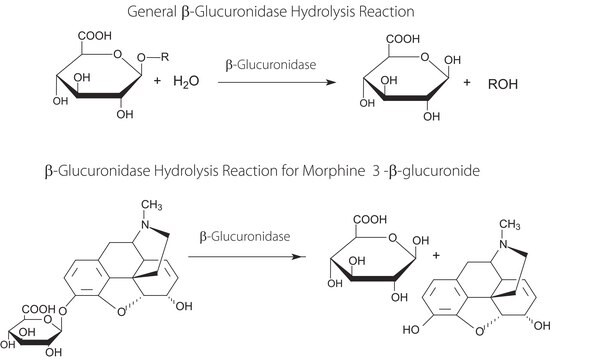46058
Esterase from porcine liver
lyophilized, powder, slightly beige, ≥50 U/mg
Sinónimos:
Carboxyl esterase, Carboxylic-ester hydrolase, PLE
Iniciar sesiónpara Ver la Fijación de precios por contrato y de la organización
About This Item
Productos recomendados
origen biológico
Porcine liver
Nivel de calidad
Formulario
lyophilized solid
powder
calidad
lyophilized
actividad específica
≥50 U/mg
mol peso
Mr ~162000
color
slightly beige
temp. de almacenamiento
−20°C
¿Está buscando productos similares? Visita Guía de comparación de productos
Descripción general
Porcine liver esterase (PLE) is localized in the endoplasmic reticulum (ER).
Aplicación
Esterase from porcine liver has been used as a negative control in fluorescence measurement studies.
Pig liver esterase is commonly used for kinetic resolutions and assymetric synthesis in organic chemistry.
Porcine liver esterase is used to catalyze the hydrolysis of pentaacetyl catechin and epicatechin for use in pharmaceutical and industrial applications.
Pig liver esterase is commonly used for kinetic resolutions and assymetric synthesis in organic chemistry.
Pig liver esterase is commonly used for kinetic resolutions and assymetric synthesis in organic chemistry.
Acciones bioquímicas o fisiológicas
Esterase acts on water-soluble carboxyl esters containing short chain fatty acids. Its functionality is attributed to the catalytic triad of Ser, His and Asp/Glu.
Porcine liver esterase (PLE) displays good stability, broad substrate specificity, and is a low-cost enzyme. It is useful in the hydrolysis of ester- and amide-containing compounds, to free acids and is useful detoxification of xenobiotics.
Componentes
contiene 1,4-ditioeritritol
Definición de unidad
1 U corresponde a la cantidad de enzima que hidroliza 1 μmol de etil valerato (Fluka® No. 30784) por minuto a pH 8.0 y 25°C
Otras notas
Podrían darse restricciones de sales
Palabra de señalización
Danger
Frases de peligro
Consejos de prudencia
Clasificaciones de peligro
Resp. Sens. 1
Código de clase de almacenamiento
11 - Combustible Solids
Clase de riesgo para el agua (WGK)
WGK 1
Punto de inflamabilidad (°F)
Not applicable
Punto de inflamabilidad (°C)
Not applicable
Equipo de protección personal
Eyeshields, Gloves, type N95 (US)
Elija entre una de las versiones más recientes:
¿Ya tiene este producto?
Encuentre la documentación para los productos que ha comprado recientemente en la Biblioteca de documentos.
Los clientes también vieron
Bornscheuer, UT & Kazlauskas, RJ
Hydrolases in Organic Synthesis, 2 (2005)
Active-site model for interpreting and predicting the specificity of pig liver esterase
Toone, EJ et al.
Journal of the American Chemical Society, 112, 4946-4952 (1990)
Elke Brüsehaber et al.
Bioorganic & medicinal chemistry, 17(23), 7878-7883 (2009-11-04)
The possible physiological role of PLE (E.C. 3.1.1.1) located in the endoplasmic reticulum (ER) of pig liver cells in the conversion of endogenous compounds was investigated as it was reported, that PLE acts as prenylated methylated protein methyl esterase (PMPMEase)
Scale-up of a recombinant pig liver esterase-catalyzed desymmetrization of Dimethyl Cyclohex-4-ene-cis-1, 2-dicarboxylate
Su?ss P, et al.
Organic Process Research & Development, 18 (2014)
Guijun Shang et al.
The Biochemical journal, 448(2), 201-211 (2012-08-31)
Tse1 (Tse is type VI secretion exported), an effector protein produced by Pseudomonas aeruginosa, is an amidase that hydrolyses the γ-D-glutamyl-DAP (γ-D-glutamyl-L-meso-diaminopimelic acid) linkage of the peptide bridge of peptidoglycan. P. aeruginosa injects Tse1 into the periplasm of recipient cells
Nuestro equipo de científicos tiene experiencia en todas las áreas de investigación: Ciencias de la vida, Ciencia de los materiales, Síntesis química, Cromatografía, Analítica y muchas otras.
Póngase en contacto con el Servicio técnico